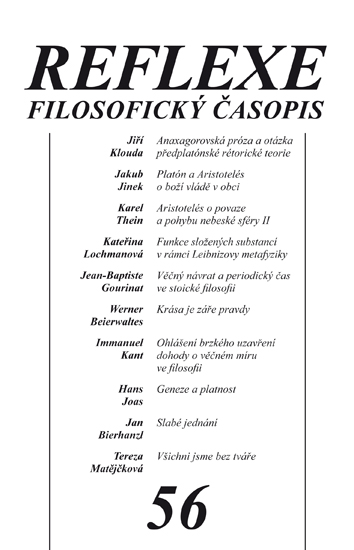Funkce složených substancí v rámci Leibnizovy metafyziky
The Role of Compound Substances in Leibniz’s Metaphysics
Author(s): Kateřina LochmanováSubject(s): Metaphysics, Early Modern Philosophy
Published by: Univerzita Karlova v Praze, Nakladatelství Karolinum
Keywords: G. W. Leibniz;compound substances; animals; metaphysics
Summary/Abstract: In this paper, I examine the role of compound substances in general, especially animals, in Leibniz’s metaphysical system. I attempt to prove that compound substances were indeed significant competitors of monads themselves, be it in terms of their lacking extension, their capability of physical interaction, or their simplicity. In addition, while compound substances may be considered to be simple in some respect, monads in turn may be considered to be composed in some respect. However, this does not mean a literal composition of parts, since parts are defined as homogeneous with the whole. As an example of compound substances, I examine the category of animals, i.e., compound substances endowed with a dominant monad in addition to some subordinated ones. The typical example of animals are human beings; however, Leibniz was unable to decide what else is supposed to belong into this category. Finally, I point out that Leibniz, in fact, never abandoned the composite substances theory, and that he did not adopt it merely for alibistic reasons in order to justify his metaphysics in the eyes of the Catholics, as was the case of des Bosses, to whom Leibniz sent several letters about compound substances. Therefore, the idealistic interpretation, a typical one for Leibniz’s later work, does not seem to be in accord with Leibniz’s own intentions. On the contrary, there are many indications suggesting that he was fairly interested in bodies themselves, not merely in the elementary (spiritual) units of bodies.
Journal: Reflexe
- Issue Year: 2019
- Issue No: 56
- Page Range: 89-107
- Page Count: 19
- Language: Czech

